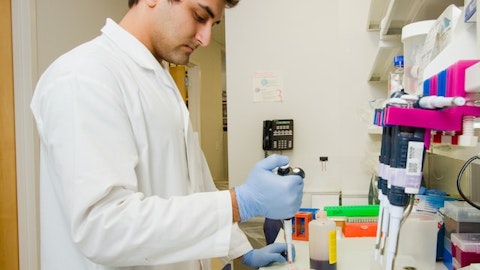Josh Jennings : Hi, good afternoon. Congrats on another strong quarter. Was hoping to just learn a little bit more about the early trends with the LTP launch. And I guess the follow up on that, is just with this, TLIF access system that you’re now watching as well. I mean, as we think about LTP gaining more and more traction, and that revenue per case metric. The LTP associated with more levels per case and therefore increase revenue per case, and should that drive that kind of lateral revenue per case metric even higher?
Pat Miles: Yes, Josh, I would say the shortest contract is going to be — most common would be L45 and L5-S1. So it’s going to be at least two levels. And so what we’re seeing is really a very favorable acceptance from lateral — or excuse me, from approach surgeons. And as you know, the nemesis of lateral has been you can’t address L5-S1from a lateral position. And so to get the type of reception that we’re receiving from access surgeons is super important. And so what we’re seeing in terms of the early experience is multilevel surgery, L5-S1 done by an approach surgeon with our access system with the patient position required to tilt the patient and then bringing the patient back to an orthogonal position from 4, 5 and above.
And so again, I think it’s better — the work is better than what we’ve done before. And so the ability to apply that learning and make sure that we’re including 5:1 is hugely important. And so as I look at the pictures, all of the orthogonality associated with what drives predictability is right there. And so again, all indications are that this will be a good one.
Todd Koning: And Josh, to your point, more levels mean more complexity, which ultimately does translate into higher revenue per case.
Josh Jennings: Great. Thanks for that. And then just wanted to — you guys are growing so strongly off of a sizable base, and one of the elements we’re trying to think through is just on the cross-selling opportunity with EOS accounts that you inherited with that acquisition and that didn’t have — haven’t adopted ATEC’s implant portfolio. But where are we in that process? And our assumption is it’s still very early and there’s still a lot of opportunity runway ahead. But just wanted to get an update there. Thanks for taking the questions.
Pat Miles: Yes. Josh, I think when I outlined what I believe to be the growth drivers of significant manner, the EOS influence in any hugely meaningful way is not transpired as of yet in terms of the reflection from the data that you get out of the EOS unit to move people for better surgery into the operative experience. And that’s where it’s like all of the automation is going to inspire significant interest. It’s just the ability to have an automated alignment measure as you take a full-body standing, biplanar low-dose image. So your ability to get the alignment measures to ultimately apply into your surgical plan and have an automated surgical plan. All those seem to be automated which will elevate the likelihood of their utility.
And so as you utilize those and you start to say, gosh, in this patient, I would like a patient-specific rod, your ability to select patient-specific rod and have that delivered into the experience and then have an interoperative reconciliation, so I got what I achieved based upon what the plan was. And then to follow up on that postoperatively with the exact same film, I think is ultimately what’s going to compel the kind of the deformity audience into the experience. And so I think we’re very early on since we haven’t launched the stuff. I don’t think that you’ve seen the type of traction that we expect to have over the years. We realized that this was going to be a long run. I would tell you one of the things I’m most proud of about the company is whenever we acquire a technology, what we do is we improve it, and we integrate it into our thesis.
And so I would say that the last little while has been committed to evolving EOS into the way that we think about the interoperative experience and those things are forthcoming clearly in mid-’24. And so our excitement is that we have a lot of momentum on the lateral front and on the surgical front, but our best days are yet ahead based on the translation of our ability to once again take information and drive more predictability.
Operator: Our next question comes from Matthew O’Brien with Piper Sandler. Please go ahead.




